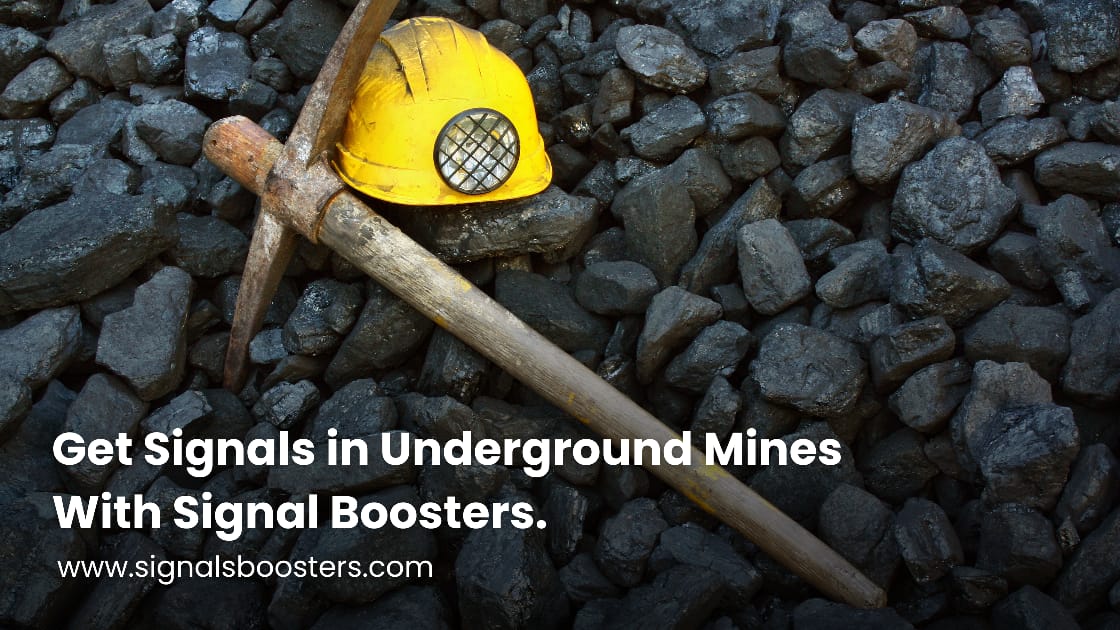Underground mining is one of the most challenging work environments in the world. With miners working deep below the earth’s surface, reliable communication is essential for both productivity and safety. However, the thick rock walls, deep tunnels, and heavy machinery create a major obstacle—poor or non-existent mobile signals.
This is where signal boosters come into play. By amplifying weak signals and ensuring seamless communication, signal boosters have become an essential tool in modern mining operations. In this blog, we will explore why underground mines face signal issues, how signal boosters work, and why they are a game-changer for mining operations.
Why Do Underground Mines Have Poor Signal Strength?
Underground mines, whether they extract coal, minerals, or metals, are typically located hundreds or even thousands of meters below the surface. Unlike open-pit mines, where signal towers can reach most areas, underground mines face the following issues:
1. Thick Rock Barriers
Mining tunnels and shafts are surrounded by dense rock formations that block and absorb mobile signals. Even if a signal tower is nearby on the surface, it cannot penetrate deep underground.
2. Depth and Distance from Cell Towers
The deeper a mine goes, the weaker the network signal becomes. In many cases, miners work in areas that are far from the nearest network tower, making it almost impossible to get a reliable connection.
3. Interference from Machinery and Metal Structures
Mining operations use heavy machinery, large metal structures, and high-powered electrical equipment. These components create electromagnetic interference, further degrading mobile signals.
4. Emergency Situations
In the event of an emergency—such as a cave-in, fire, or gas leak—instant communication can be a matter of life and death. Without a strong signal, emergency alerts and rescue coordination can be delayed, putting workers at serious risk.
How Do Signal Boosters Work in Underground Mines?
Signal boosters are designed to amplify weak signals and ensure that underground workers stay connected. Here’s how they function in a mining environment:
- Capturing the External Signal
- A powerful outdoor antenna is placed near the mine entrance or at a high point on the surface. This antenna captures signals from the nearest cell tower.
- Amplification of the Signal
- The weak signal is then amplified by a signal booster unit located underground or in a central control room.
- Distribution of the Signal
- The amplified signal is distributed through internal antennas or coaxial cables placed strategically throughout the mine. This ensures that workers can send and receive calls, texts, and data even in deep tunnels.
- Maintaining Consistency
- High-quality boosters use automatic gain control (AGC) to prevent signal fluctuations, ensuring stable connectivity.
Benefits of Using Signal Boosters in Underground Mines
1. Improved Safety & Emergency Response
- Miners can immediately report hazards, accidents, or injuries to the surface control room.
- Emergency rescue teams can coordinate more effectively with real-time communication.
- Gas detection systems and automated alarms can transmit alerts faster.
2. Better Coordination & Productivity
- Supervisors can communicate instantly with teams in different mine sections.
- Equipment operators can receive instructions without delays, reducing downtime.
- Real-time monitoring of operations through wireless devices and IoT sensors.
3. Enhanced Worker Well-being
- Miners can stay connected with family and friends during breaks, improving morale.
- Real-time internet access enables miners to receive critical updates, weather alerts, or work schedules.
4. Cost-Effective Solution for Mining Companies
- Prevents loss of productivity due to miscommunication or delays.
- Reduces risk-related costs by improving worker safety.
- Increases the lifespan of communication infrastructure by preventing signal overload.
Choosing the Right Signal Booster for Underground Mines
Selecting the right signal booster depends on the mine’s depth, size, and communication needs. Here are key factors to consider:
1. Frequency Compatibility
- The booster should support multiple frequency bands to work with all mobile networks.
- Some mines may require customized solutions for two-way radios and Wi-Fi systems.
2. Coverage Area
- Mines with large tunnel networks need multiple booster units to ensure full coverage.
- Directional antennas help focus the signal in specific areas.
3. Durability & Resistance
- Mining conditions are harsh, so boosters must be dustproof, waterproof, and resistant to extreme temperatures.
4. Power Efficiency
- Since underground electricity access is limited, energy-efficient boosters are ideal for reducing operational costs.
Conclusion: Strengthening Connectivity in Mines with Cellaro Signal Boosters
At Cellaro Signal Boosters, we understand that reliable communication is not a luxury but a necessity in underground mines. Our state-of-the-art mining signal boosters are designed to withstand tough conditions and provide uninterrupted mobile connectivity.
By investing in Cellaro signal boosters, mining companies can ensure a safer, more efficient, and more connected working environment for their employees. Whether it’s for emergency response, operational efficiency, or worker well-being, our technology is here to keep mines connected—deep underground or across vast tunnel networks.
Ready to Upgrade Your Mining Communication System?
Contact Cellaro Signal Boosters today for expert consultation and customized signal booster solutions for your mining operations!
Stay connected. Stay safe. Stay productive.




